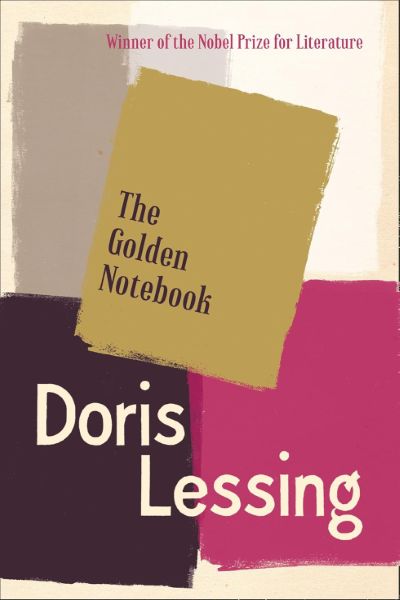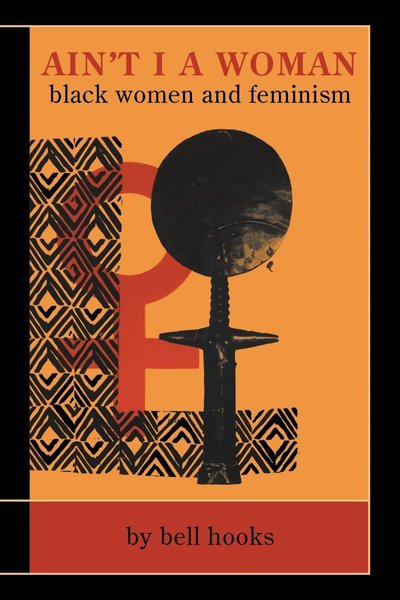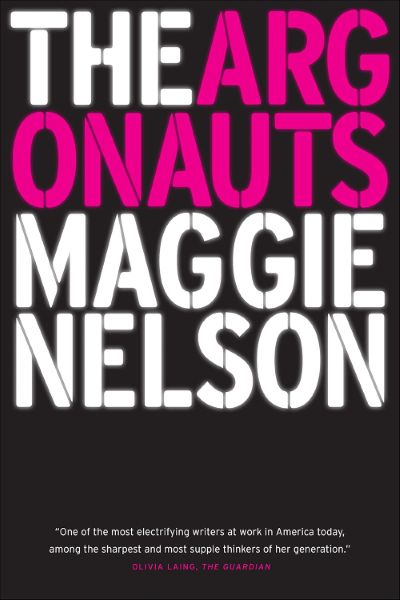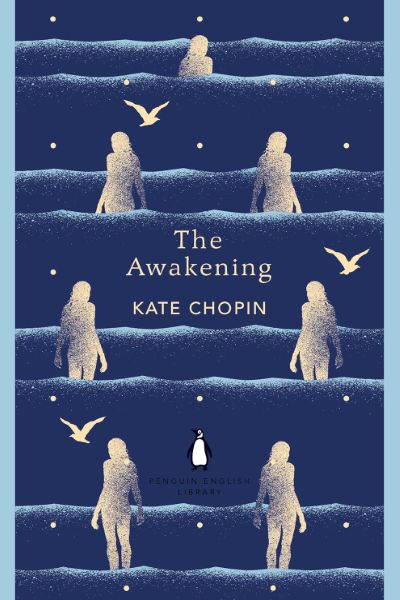The Golden Notebook
The most famous 1962 experimental novel by 2007 Nobel Prize winner Doris Lessing, telling the then-unspeakable facts: women as beings with sexual desires, who suffer from mental illness, who struggle, who climax, who menstruate. Through the perspective of writer Anna trying to integrate her life experiences and creative notes into a unified whole, Lessing explores the unbeautiful aspects of women's lives with love, anger, and a frankness almost unheard of among women writers at the time.

📝 Book Review
In the literary world of the early 1960s, Doris Lessing’s “The Golden Notebook” exploded like a literary bomb, completely shaking traditional narrative patterns and social taboos. This experimental novel published in 1962 not only broke through the boundaries of traditional novels in form but also boldly touched upon women’s experiences that were unspeakable in society at the time. Through protagonist Anna Wulf—a writer attempting to organize her fragmented life through four differently colored notebooks—Lessing presents us with a complex and authentic picture of modern women’s lives, laying important foundations for later feminist literature and modernist writing.
With her keen insight and fearless spirit of exploration, Lessing weaves women’s inner worlds, bodily experiences, political positions, and creative dilemmas into a complex narrative network. This work’s revolutionary nature lies not only in its frank description of women’s authentic experiences but also in its complete subversion of traditional literary forms, providing unique and precious literary testimony for understanding women’s circumstances and social changes in mid-20th century.
Revolutionary Structural Experiment
“The Golden Notebook’s” most striking characteristic is its unique structural design. The novel consists of five parts: four differently colored notebooks and a traditional novel called “Free Women.” The black notebook records Anna’s experiences as a writer, the red notebook records her political activities, the yellow notebook records her thoughts on emotional relationships, and the blue notebook is her personal diary. Finally, the golden notebook represents a comprehensive integration of all experiences.
This structural design reflects Lessing’s profound understanding of modern life’s fragmented nature. In rapidly changing modern society, personal experiences often present characteristics of division and contradiction, making them difficult to express completely through traditional linear narrative. Through the multiple notebook format, Lessing demonstrates how modern women struggle between different social roles and personal identities, how they attempt to find meaning and coherence in fragmented experiences.
This experimental narrative technique is not only formal innovation but also embodies profound recognition of women’s experience complexity. Anna cannot integrate her life experiences into a single, coherent narrative, and this predicament reflects the universal problem faced by modern women: finding balance between multiple social expectations and personal desires, establishing connections between public roles and private identities.
The structure also serves as a metaphor for consciousness itself—the way memory works, how we compartmentalize different aspects of our lives, and the human desire to find wholeness despite fragmentation. Lessing’s innovation was to make this psychological reality visible through literary form.
Groundbreaking Descriptions of Women’s Bodies and Sexual Experience
“The Golden Notebook” has groundbreaking significance in describing women’s bodily experiences and sexual experiences. In the early 1960s, openly discussing women’s sexual desires, menstruation, mental health, and other topics remained social taboos. Lessing described these “unspeakable” aspects of women’s lives with unprecedented frankness and detail.
Anna’s descriptions of her sexual experiences neither romanticize nor shame them but handle them with a frank yet complex attitude. She describes orgasms, sexual frustration, complex feelings toward sexual partners, and complex relationships between sexuality and emotion. This descriptive approach was revolutionary at the time; it refused to reduce women’s sexual experiences to objects of moral judgment, instead treating them as important components of human experience.
Lessing’s descriptions of menstruation, gynecological examinations, contraception, and other topics are equally groundbreaking. These daily bodily experiences were often ignored or avoided in traditional literature but receive detailed and respectful description in “The Golden Notebook.” Through such descriptions, Lessing not only legitimizes women’s bodily experiences but also opens paths for later feminist literature.
The novel’s approach to sexuality is notable for its refusal of both prudishness and sensationalism. Instead, Lessing presents sexuality as integral to human experience while acknowledging its complexities, contradictions, and the ways it intersects with power, emotion, and social convention.
Profound Exploration of Mental Health
“The Golden Notebook’s” exploration of mental health issues is another important feature. Anna experiences severe mental crisis, including anxiety, depression, and doubt about reality. Lessing’s description of these experiences neither romanticizes them as artist’s traits nor pathologizes them as diseases requiring treatment, but views them as normal reactions to modern life conditions.
Lessing particularly focuses on the relationship between women’s mental health and social environment. Anna’s mental crisis is not only personal but also social—it reflects the structural pressures and contradictions women face in patriarchal society. As an independent professional woman, single mother, and political activist, Anna needs to switch between multiple roles, bearing pressure and expectations from various directions.
The novel’s descriptions of psychoanalysis and psychotherapy are also interesting. Anna receives psychoanalytic treatment but maintains a critical attitude toward the therapeutic process. She questions traditional psychoanalysis’s understanding of women’s experiences, particularly definitions of women’s “femininity.” This questioning reflects Lessing’s dissatisfaction with mainstream psychological theories of the time and anticipates later feminist critiques of psychoanalysis.
Lessing’s treatment of mental health was prescient in recognizing the political dimensions of psychological distress. Anna’s breakdown is not simply individual pathology but a response to impossible social conditions—the novel suggests that women’s mental health problems often reflect social rather than individual dysfunction.
Personal Experience of Left-Wing Politics
The red notebook section of “The Golden Notebook” details Anna’s communist political experiences. Lessing herself was a member of the British Communist Party, and she has profound understanding of left-wing politics’ internal contradictions and personal costs. Through Anna’s political experiences, the novel explores gaps between idealism and reality and how political beliefs affect personal life.
Gender discrimination issues Anna faces in political activities particularly deserve attention. Although left-wing politics theoretically supports gender equality, in practice, women political activists still face marginalization and gendered treatment. Anna discovers that even in progressive political organizations, women’s voices are still easily ignored, and women’s contributions are still easily undervalued.
Lessing’s critique of Stalinism is also important content in the novel. Anna gradually recognizes problems with the Soviet system and begins questioning her long-held political beliefs. This process of political disillusionment is not only rational but also emotional—it involves reexamining values like friendship, loyalty, and ideals.
The novel’s political sections reveal how personal and political are intertwined—how political commitments shape intimate relationships, how political disillusionment affects mental health, and how the gap between political ideals and political reality creates psychological conflict.
Creative Dilemmas and Female Artist Identity
As a novel about a writer, “The Golden Notebook” deeply explores dilemmas and challenges in the creative process. Anna faces severe writer’s block, unable to complete new creations. This creative dilemma is not only technical but existential—it involves thinking about fundamental questions of artistic value, social responsibility, and personal expression.
Lessing particularly focuses on unique challenges faced by women artists. Anna needs to balance relationships between creation and motherhood, handle social stereotypes about women writers, and find her own voice in a male-dominated literary world. These challenges are not only external but also internal—they involve women’s confidence in their own creative abilities and value.
The novel’s descriptions of the creative process are also excellent. Anna attempts to classify and organize her experiences through different notebooks, but this classification itself is artificial and limited. Real experiences are often mixed and contradictory, difficult to summarize through simple classifications. This recognition prompts Anna to finally attempt creating the golden notebook, trying to find a more comprehensive and holistic mode of expression.
The creative dilemmas Anna faces reflect broader questions about the relationship between art and life, the responsibility of the artist to society, and the particular challenges faced by women seeking to create authentic art while navigating social expectations about women’s roles.
Alienation in Modern Life
“The Golden Notebook” profoundly reflects modern life’s sense of alienation and fragmented characteristics. Anna feels distance from the surrounding world, from other people, and even from herself. This alienation is not only personal feeling but also symptomatic of the era—it reflects the complexity and fragility of relationships between people in modern society.
Lessing’s descriptions of urban life are particularly vivid. London’s coldness, crowding, and anonymity all become backgrounds for Anna’s sense of alienation. She feels lonely in crowds, false in social activities, and isolated in intimate relationships. This description captures typical characteristics of modern urban life and provides important material for understanding mid-20th century social psychology.
At the same time, Lessing also explores the impact of modern communications and media on interpersonal relationships. Anna understands the world through newspapers and radio, but this understanding is often one-sided and distorted. There is a huge gap between the false reality created by media and personal authentic experience, and this gap exacerbates modern people’s confusion and alienation.
Tension Between Motherhood and Women’s Independence
As a single mother, Anna faces tension between traditional maternal roles and modern women’s independence. She loves her daughter deeply but also feels the limitations that the mother role places on her personal development. This contradictory psychology was rarely discussed openly at the time; Lessing describes this inner conflict with honest and delicate strokes.
Lessing’s description of mother-daughter relationships is particularly complex and real. Anna both hopes to provide the best living conditions for her daughter and hopes not to repeat her own mother’s mistakes. She observes her daughter’s growth, feeling both pride and worry. This complex emotion reflects women’s rethinking and questioning of traditional maternal roles.
The novel also explores society’s attitudes toward single mothers. In the 1960s, single mothers still faced many prejudices and difficulties. Anna needs to cope with these challenges on economic, emotional, and social levels. Through Anna’s experiences, Lessing reveals society’s intolerance toward non-traditional family structures and the harm this intolerance causes to women and children.
Friendship and Female Solidarity
Female friendship relationships in “The Golden Notebook” are important content of the novel. Anna’s relationships with female friends like Molly are both intimate and complex, both supportive and competitive. Lessing’s description of female friendships avoids simple idealization, instead showing their complexity and contradictions.
Conversations between women are excellent parts of the novel. They talk about men, work, children, politics, art, and various other topics; these conversations are both humorous and profound, both relaxed and heavy. Through these conversations, Lessing shows how women understand their experiences through communication, how they reduce loneliness through sharing.
At the same time, the novel also explores competition and jealousy between women. Anna has competitive relationships with other women regarding men, careers, and appearance; this competition sometimes destroys friendships. Lessing honestly describes this competition while also analyzing its social roots—in a male-dominated society, women are often forced to compete for limited resources and opportunities.
The portrayal of female friendship is notable for its refusal of simple sisterhood narratives. Instead, Lessing shows how women’s relationships are shaped by the same social forces that create competition between them, while also revealing the possibilities for genuine connection and mutual support.
Challenge to Traditional Literary Forms
“The Golden Notebook” is revolutionary not only in content but also fundamentally challenges traditional literature in form. Lessing refuses to adopt traditional linear narrative, instead using modernist techniques like multiple texts and metafiction. This formal experimentation is not for showing off but for better expressing the complexity of modern experience.
The “Free Women” section in the novel is a traditional realist novel, while the notebook sections adopt different literary styles like diary, memory, and analysis. This contrast emphasizes the limitations of traditional literary forms and the necessity of finding new modes of expression.
Lessing’s challenge to readers is also obvious. This novel requires readers to actively participate in meaning construction, requires readers to establish connections between different texts, and requires readers to tolerate uncertainty and contradictions. This writing strategy reflects Lessing’s respect for readers’ intelligence and judgment, and also embodies her pursuit of literary democratization.
Historical Background and Social Change
“The Golden Notebook” profoundly reflects social changes of the 1950s-60s. This was an era when traditional values were being challenged and new social forms were emerging. Through Anna’s experiences, Lessing records the complexity and contradictions of this historical period.
The Cold War background’s influence on the novel is obvious. Political tension, ideological opposition, nuclear threats all become backgrounds for Anna’s life. How these major historical events affect personal life, how they shape individuals’ worldviews and values, is important content the novel explores.
At the same time, the novel also reflects changes in post-war British society. Traditional class structures were loosening, new social mobility was emerging, and traditional gender roles were being questioned. Anna’s experience as an immigrant woman from the colonies particularly reflects the complexity of this social change.
Influence on Later Feminist Literature
“The Golden Notebook” had profound influence on later feminist literature. It provided a template for women writers to express complex women’s experiences, proving that women’s inner worlds and bodily experiences deserve serious literary expression.
Many later women writers acknowledge being influenced by Lessing. From Margaret Atwood to Zadie Smith, from Toni Morrison to Jeanette Winterson, traces of “The Golden Notebook’s” influence can be seen. This influence is manifested not only in content but also in form—many women writers have attempted to use experimental narrative techniques to express the complexity of women’s experiences.
The novel’s influence on feminist theory is also significant. It provided important literary resources for second-wave feminism, providing vivid examples for understanding modern women’s dilemmas and challenges. Many feminist theorists have cited this novel to support their viewpoints.
Contemporary Significance and Continuing Relevance
Although “The Golden Notebook” was written sixty years ago, many problems it explores still have practical significance today. Modern women still face challenges of balancing career and family, still need to cope with social expectations about women’s roles, and still need to find their own voices and identities.
The novel’s discussion of mental health issues is particularly relevant today. As society’s attention to mental health issues increases, Anna’s experiences provide important reference for understanding psychological pressures of modern life.
Politically, the novel’s exploration of contradictions between idealism and reality is also very practically significant. In an era of political polarization, how to maintain enthusiasm for political participation, how to cope with political disillusionment, and how to find balance between ideals and reality are all important problems contemporary people face.
The novel’s insights about the relationship between personal and political remain relevant as contemporary movements grapple with questions about how individual experience relates to collective action, how personal transformation relates to social change, and how to maintain hope in the face of systemic problems.
Literary Historical Position and Classic Value
“The Golden Notebook” occupies an important position in literary history. It is considered one of the most important feminist novels of the 20th century and also an important work of modernist literature. It opened new paths for women’s writing and provided successful examples for experimental novels.
As a classic work, “The Golden Notebook’s” value lies not only in its historical significance but also in its continuing inspiration. Each generation of readers can discover new meanings from it and gain new insights. This continuing relevance is an important characteristic of classic works.
Lessing gained international reputation through this novel and ultimately won the Nobel Prize in Literature. This international recognition is not only affirmation of Lessing’s personal talent but also confirmation of the value of women’s writing.
Conclusion: Mirror of Modern Reality
Today, “The Golden Notebook” remains an indispensable important text for understanding modern women’s experiences, modern literary development, and 20th-century social changes. It reminds us that real life is complex, contradictory, and full of challenges, but it is precisely this complexity that constitutes the richness of human experience.
In a world still full of gender inequality and social contradictions, Anna Wulf’s struggles and explorations continue to provide us with thought and inspiration. “The Golden Notebook” is not only an outstanding literary work but also a mirror reflecting the complex reality of modern life.
It tells us that true literature is not about escaping reality but facing reality; not about providing simple answers but raising important questions; not about beautifying life but revealing life’s truth. In this sense, Doris Lessing’s “The Golden Notebook” will forever maintain its classic status and inspirational value.
The novel’s enduring power lies in its recognition that authenticity requires acknowledging complexity, that wholeness can only be achieved by accepting fragmentation, and that the struggle to integrate experience into coherent meaning is itself the most human of endeavors. Through Anna’s ultimately unsuccessful but necessary attempt to create the golden notebook that would unify all her experiences, Lessing demonstrates both the impossibility and the necessity of seeking unity in modern life.
“The Golden Notebook” remains a vital text because it insists that women’s experiences—in all their contradiction, complexity, and difficulty—deserve serious artistic attention and because it demonstrates formal innovations that make such attention possible. It stands as both a historical document of women’s lives in the mid-20th century and a continuing resource for understanding the challenges of living authentically in any era.
Book Info
🛒 Get This Book
 Buy on Amazon
Buy on Amazon Related Books
Book Discussion
Share your thoughts and opinions on this book and exchange insights with other readers
Join the Discussion
Share your thoughts and opinions on this book and exchange insights with other readers
Loading comments...


